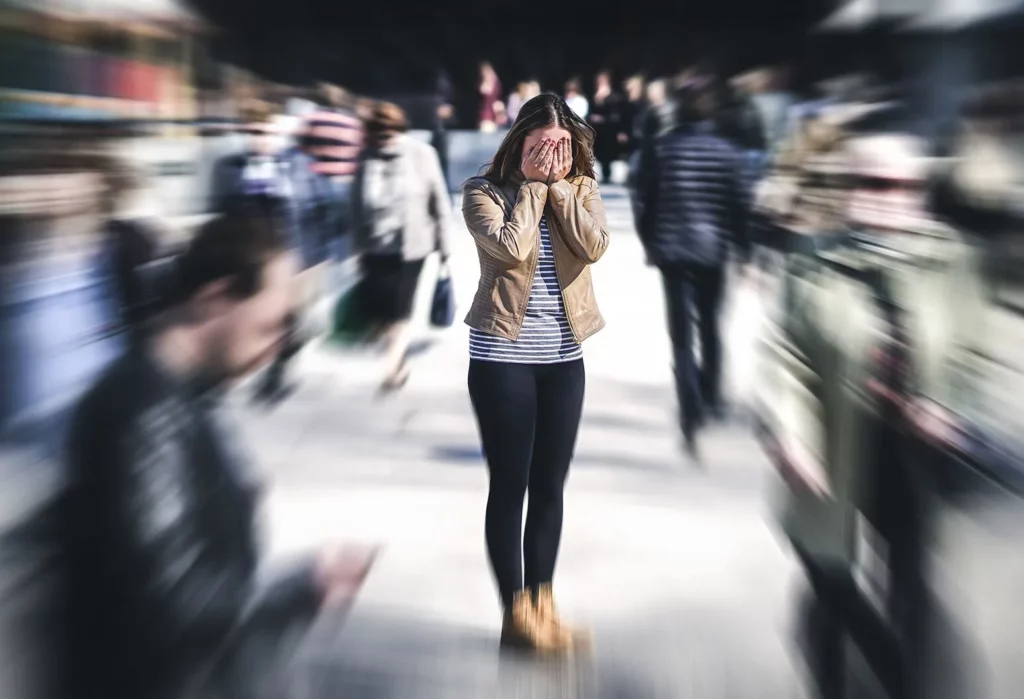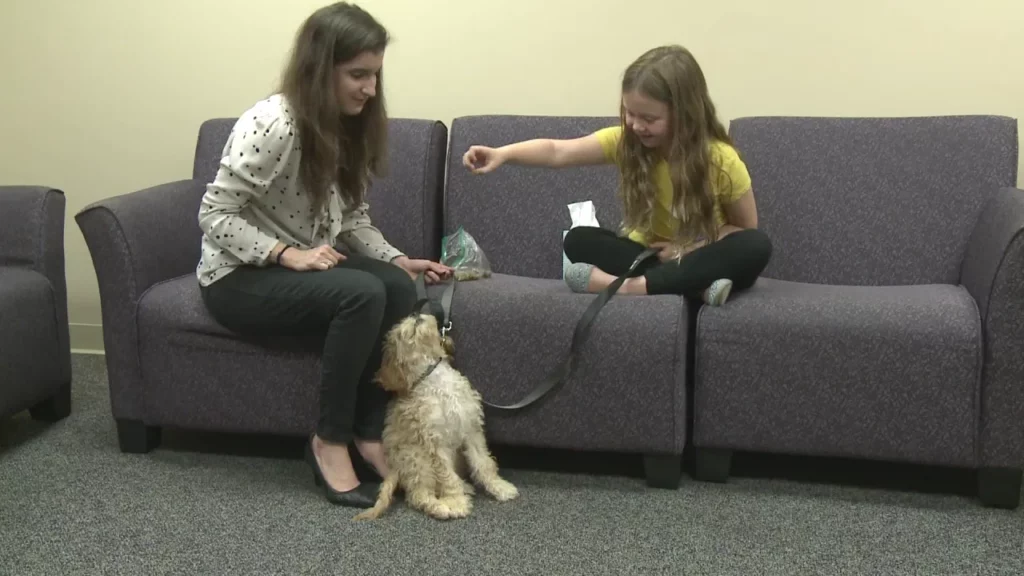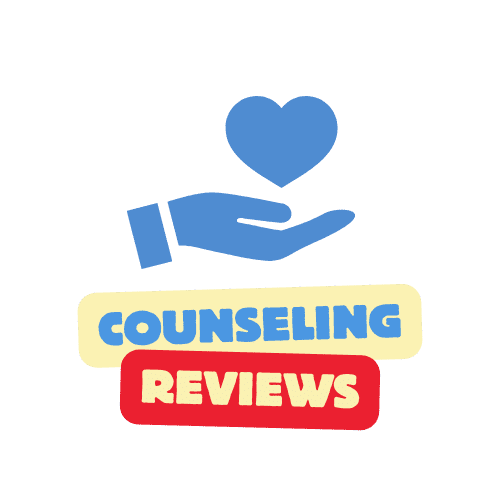The Psychiatric Times defines exposure therapy as “any treatment that encourages the systematic confrontation of feared stimuli, which can be external (feared objects, activities, situations) or internal (feared thoughts, physical sensations).
The aim of exposure therapy is to reduce the person’s fearful reaction to the stimulus.” (Tolin, 2011) Used to treat anxiety-related disorders, exposure therapy is considered the first line of treatment and is the most well-researched and effective treatment for such disorders. (Exposure therapy effective for pediatric anxiety and OCD, 2015)
Over 25% of the U.S. population has or will have an anxiety disorder in their lifetime. Despite exposure therapy being considered one of the most effective forms of treatment for anxiety-related disorders, only a small percentage of licensed therapists utilize this form of treatment. (Tolin, 2011)
Though most graduate schools teach the techniques associated with exposure therapy, to be considered competently trained in this technique, most clinicians would have to receive additional training via workshops or apprenticeships.
In this article, we will discuss what exposure therapy looks like during a session, what conditions are treated successfully, how much research is available regarding its efficacy, and how you might find support if you are considering exposure therapy.
How does Exposure Therapy Work?
Therapy begins as a collaborative relationship between the client and their therapist. It is up to the client to determine their fears, goals, and what level of exposure they are initially willing to tolerate.
Together, the client and their therapist will formulate a treatment plan which can be adjusted as treatment progresses.
Depending on the severity of the anxiety disorder, treatment can resolve symptoms in as few as a couple of sessions or it may take as long as traditional therapy practices.
Specific phobias, such as the fear of snakes, generally appear to require less exposure therapy treatment than Obsessive Compulsive Disorder (OCD).
Treatment length depends on several factors including the client’s willingness to participate, the skill level of the therapist, the pervasiveness of the anxiety disorder, and more.
What does Exposure Therapy Treat?
- Phobias
- OCD (Obsessive Control Disorder)
- Panic Disorder
- PTSD (Post Traumatic Stress Disorder)
- GAD (Generalized Anxiety Disorder)

Benefits of Exposure Therapy
Efficacy: Research suggests that exposure therapy is highly effective in treating various anxiety-related disorders.
Empowerment: Helps individuals gain a sense of control over their fears and anxieties.
Long-lasting Results: Many individuals experience lasting benefits, and the positive effects often endure after the therapy is completed.
Adaptability: Can be adapted for different age groups and tailored to individual needs.
Types of Exposure Techniques
There are several different techniques a therapist may use with their client. A therapist may use all of the techniques listed, a combination, or just a few.
Clients should feel safe knowing the treatment plan is mutually agreed upon and they don’t have to fear being surprised by the therapist.
Imaginal Exposure involves having the client imagine their anxiety-provoking stimuli as realistically as possible.
The therapist engages the client’s sensory skills by guiding them during their imagery session to notice the sights of their surroundings, the smells, noises, and tastes.
The client is encouraged to use present-tense language as they relay their description out loud. In this manner, the client is gently exposed to the stimuli with the support of the therapist in the room.
Using the snake phobia example, a client may be asked to visualize a snake in a cage while describing the thoughts, feelings, and sensations that arise.
By visualizing the scenario as realistically as possible, the client gets to experience this exposure and manage their anxiety in a controlled environment. The goal is that with practice, the client will be able to withstand their snake phobia without maladaptive amounts of anxiety.
Virtual reality exposure is a relatively new tool that is now being utilized during exposure therapy and offers a more realistic environment than imaginal exposure.
For example, clients who are afraid to fly can use virtual reality to simulate a flying experience with the goal of lowering their anxiety enough to be able to travel on a real airplane.
Interoceptive exposure focuses on creating physical responses associated with panic. For example, clients who have experienced panic attacks report feeling as though they are having a heart attack.
Using interoceptive exposure, a therapist would have the client run in place to speed up their heart rate. Through imagery, discussion, and feedback, the client could experience a simulated version of a panic attack in a controlled and supportive environment, with one of the goals being able to better tolerate the anxiety around anticipating or experiencing a panic attack.
In-vivo exposure requires clients to experience real-world exposure to stimuli. For instance, a client who is fearful of germs may be asked to hold a dirty cup during a therapy session.
While holding the cup, the therapist would talk the client through the experience while also encouraging the client to provide feedback as they are holding the dirty cup.
Cognitive distortions are an important part of exposure therapy and involve the thoughts a client has before, during, and after exposure to the stimuli.
As clients are experiencing exposure, the client and the therapist will discuss the cognitive distortions that appear. The therapist and the client will then examine the evidence for and against these beliefs.
The goal is to learn more realistic and adaptive ways of thinking about fear.
Pace of Exposure
Graded exposure is a term used to describe the pace of exposure during sessions. When a therapist introduces stimuli in a graded fashion, they introduce the mildest stimulus first, then work their way up to strongly feared stimuli.
A client who has a phobia of spiders may first be asked to look at pictures of spiders, then the therapist may bring a contained spider into the room, followed by the client holding the spider. In this way, the client builds up their tolerance gradually, over a number of sessions.
Flooding exposure is another term used to describe the pace of exposure during sessions. Unlike graded exposure, flooding involves presenting the client with the most challenging stimuli first.

Goals of Exposure Therapy
Habituation is the ability of the client to withstand previously intolerable stimuli and to reduce their fear regarding it.
Extinction is the formulation of new and more adaptive beliefs and associations about the stimuli.
Self-efficacy occurs when the client feels more confident and capable of dealing with fear.
Emotional processing allows the client to formulate new and more adaptive insight into their previously held fears.
Research Data
The following journal report from the Veterans Association demonstrates great efficacy with exposure treatment, specifically the treatment of PTSD.
“PE (prolonged exposure therapy) is a gold standard treatment for PTSD that has been subjected to many clinical trials supporting its effectiveness in reducing PTSD even among complex and comorbid (more than one diagnosis) patients.
Thus, if PTSD is primary for a patient and the patient is not in imminent risk of harm (from self or others), PE may be indicated and should be considered a critical part of the treatment plan.” (Sheila A. M. Rauch & Afsoon Eftekhari, 2012)
Another journal report from the Proceedings of the National Academy of Sciences indicates actual positive changes in the brain after only one exposure therapy session. The research scientists followed up with the participants and noted positive improvement after one year from the initial treatment.
There are many more studies indicating the effectiveness of exposure therapy and studies continue to be conducted presently. Overall, research reveals exposure therapy has very positive outcomes for relieving the negative effects of anxiety-related disorders.
Finding Support
Exposure therapy should not be done without the help of a trained and licensed therapist. Though some people may feel inclined to take matters into their own hands, performing exposure therapy techniques on your own would likely increase anxiety instead of resolving it.
Whether you seek a therapist locally or prefer online therapy, it is important to seek a therapist who has been properly trained and has a lot of experience with exposure therapy in the clinical setting.
Questions to Qualify a Competent Therapist
- How long have you been using exposure therapy in your practice?
- What is your success rate with clients using this method?
- What type of training did you receive regarding exposure therapy techniques?

Conclusion
Overall, exposure therapy offers very promising results in treating anxiety-related disorders. Living with any type of anxiety disorder can be debilitating and negatively impact one’s quality of life.
It’s reassuring to learn there is a research-based effective treatment to resolve these disorders to the degree that life is more than manageable, and people can actually thrive.
If you or someone you know is considering exposure therapy, check out Counseling Reviews to research outlets and therapists that might be right for you.





